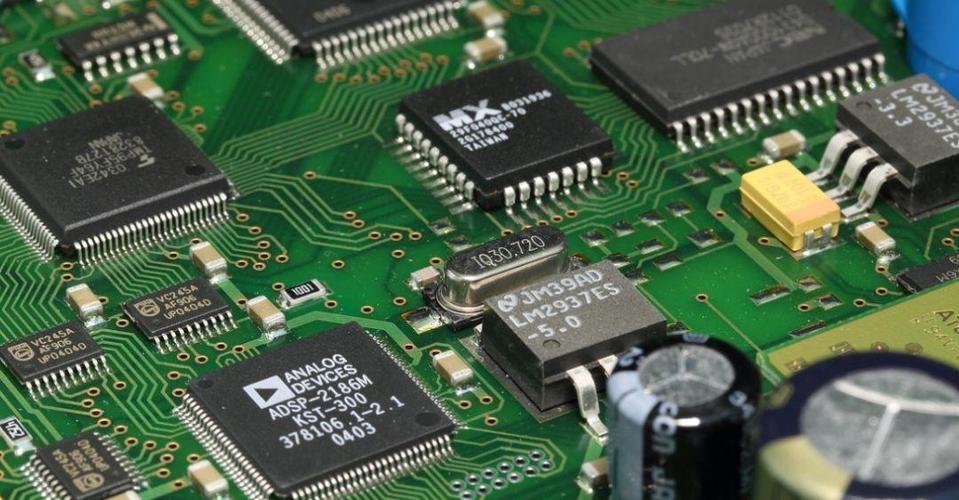The radiation interference of the switching power supply is proportional to the product of the current size in the current path, the loop area of the path, and the square of the current frequency, that is, the radiation interference E∞IAf2. The premise of using this relationship is that the channel size is much smaller than the wavelength of the frequency.

The above relationship shows that reducing the channel area is the key to reducing radiated interference. That is to say, the components of the switching power supply must be densely arranged with each other. In the primary circuit, the input capacitor, transistor, and transformer are required to be close to each other, and the wiring is compact; in the secondary circuit, the diode, transformer, and output capacitor are required to be close to each other.
When designing a printed circuit board, you should try to place related components together to avoid interference caused by too long printed lines due to components that are too far apart; in addition, signal input And the output signal should be placed as close as possible to the lead port to avoid interference caused by the coupling path. On the printed board, put the positive and load current conductors close to the two sides of the printed board, and try to keep them parallel, because the external magnetic fields generated by the parallel and close positive and load current conductors tend to cancel each other out of. Practice has proved that the component layout and wiring design of the printed board have a great impact on the EMC performance of the switching power supply. In the high-frequency switching power supply, because the printed board has a small signal control with a level of ±5~±15V There are also high-voltage power supply buses, as well as some high-frequency power switches and magnetic components. How to arrange the position of the components reasonably in the limited space of the printed board will directly affect the anti-interference of each component in the circuit. And the reliability of circuit work. In addition, remember that the two printed signal lines are wired in parallel. If parallel wiring cannot be avoided, the following methods can be used to remedy:
(1) The direction of the current flowing through the two parallel signal lines is reversed.
(2) Keep the distance between the two parallel signal lines as far as possible to reduce the influence of the electromagnetic field between the two lines;
(3) Add a ground wire between the two signal wires for shielding;
The electromagnetic coupling between the wiring is carried out through the electric field and the magnetic field, so when wiring, attention should be paid to restrain the coupling of the electric field and the magnetic field. The method of restraining the electric field is as follows:
(1) Use electrostatic shielding, and the shielding layer must be grounded;
(2) Reduce the input impedance of sensitive lines.
(3) Try to increase the distance between lines to minimize capacitive coupling;
The method of restraining the magnetic field is as follows:
(1) It is best to make the interference source and the sensitive circuit be wired directly, so as to greatly reduce the coupling between the lines.
(2) Increase the distance between the lines to make the mutual inductance between the coupled interference source and the sensitive circuit as small as possible;
(3) Reduce the loop area of interference sources and sensitive circuits;
In addition, by analyzing the characteristic impedance of the printed wires, the placement, length, width and layout of the printed wires are selected. The characteristic impedance of a single wire is composed of DC resistance R and self-inductance L. The shorter the printed line J, the smaller the DC resistance R; at the same time, increasing the width and thickness of the printed line can also reduce the DC resistance R. The shorter the printed line length J, the smaller the self-inductance L, and increasing the printed line width B can also reduce the self-inductance L. The characteristic impedance of multiple printed lines is not only composed of DC resistance R and self-inductance L, but also affected by mutual inductance M. In addition to being affected by the length and width of the printed lines, the mutual inductance M is also affected by the length and width of the printed lines. The distance also plays an important role, increasing the distance between the two lines can reduce the mutual inductance. In view of the above phenomenon, when designing the printed circuit board, the impedance of the power line and the ground line should be reduced as much as possible, because the power line, the ground line and other printed lines all have inductance. Large voltage drop, and the ground wire voltage drop is an important factor in the formation of common impedance interference, so the ground wire should be shortened as much as possible, and the power line and ground wire can be thickened as much as possible. In the double-sided printed circuit board design, in addition to thickening the power line and ground line as much as possible, a decoupling capacitor with good high-frequency characteristics should be installed between the ground line and the power line.
The above is an introduction to the design considerations of switching power supply PCB printed circuit boards. Ipcb is also provided to PCB manufacturers and PCB manufacturing technology.